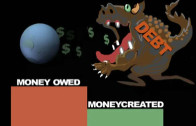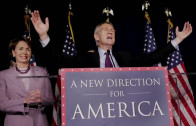Money as Debt
Money is a new form of slavery and is only distinguishable from the old slavery simply by the fact that it is impersonal–that there is no human relation between master and slave. Debt in government, corporate and household has reached astronomical proportions. Where does all this money come from? How could there be that much money to lend? The answer is that there isn’t…
Series
Part one explains the workings of the modern money system by explores the foundations of fractional-reserve banking. New money enters the economy through the indebtedness of borrowers, thus not only obligating the public to the money-issuing private banks but also creating an endless and self-escalating debt that can never be repaid.
Bailouts, stimulus packages, debt piled upon debt–where will it all end? How did we get into a situation where there has never been more material wealth and productivity and yet everyone is in debt to bankers? And now, all of a sudden, the bankers have no money and we the taxpayers, have to rescue them by going even further into debt! If this is puzzling to you, you are not alone. Very few people understand, even though all of us are affected–and this is by design…
The final part of this series dispels the popular misconception that interest is the structural root of money problems, and shows clearly why the prevailing and generally unquestioned concept of money as a single uniform commodity is the real cause of persistent money system dysfunction and huge social inequalities. There is now, and there has long been, an alternative way to do money. Part three illustrates in detail, how a fundamental change in the long-held concept of money, paired with recent technology could open the door to a self-generating and self-balancing global money system, backed by real value, open to all.




